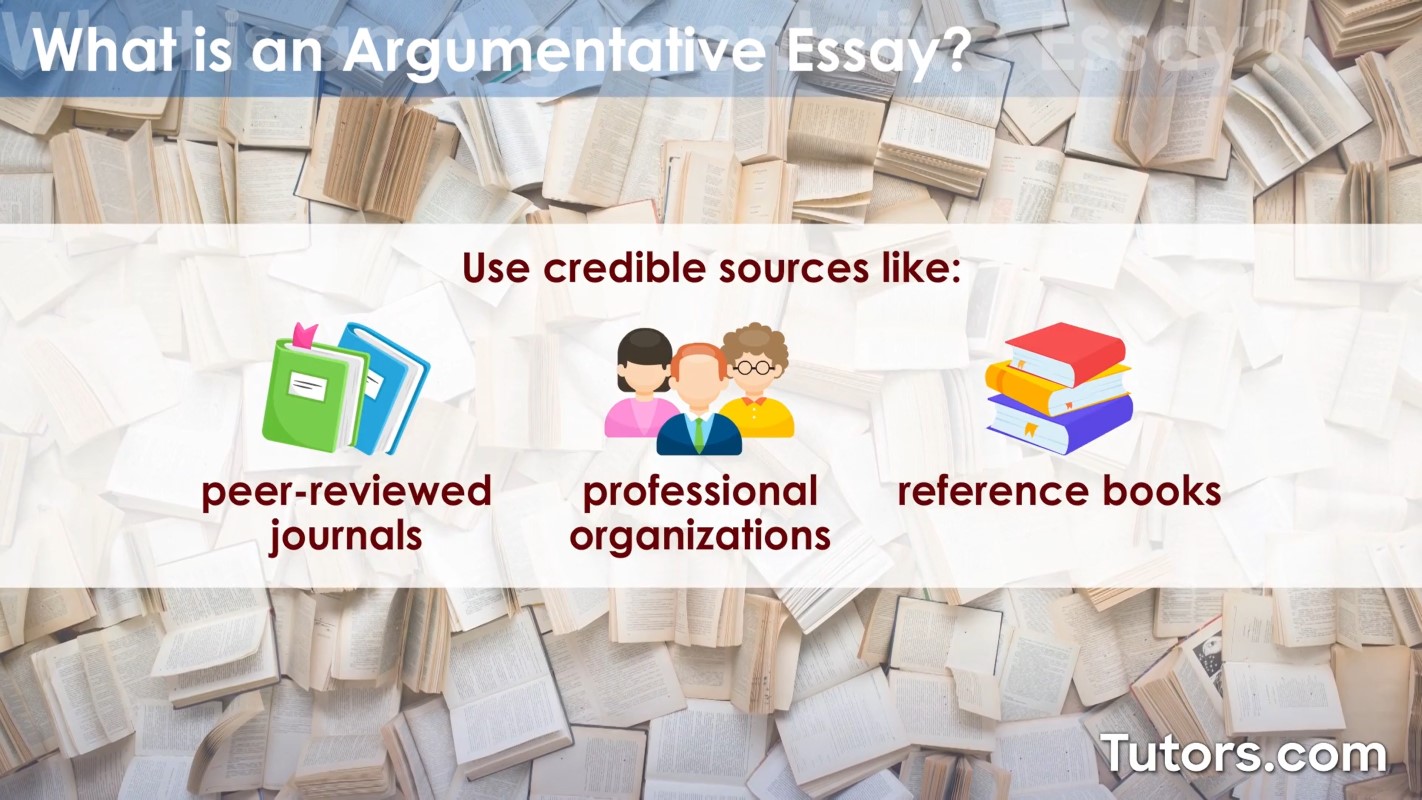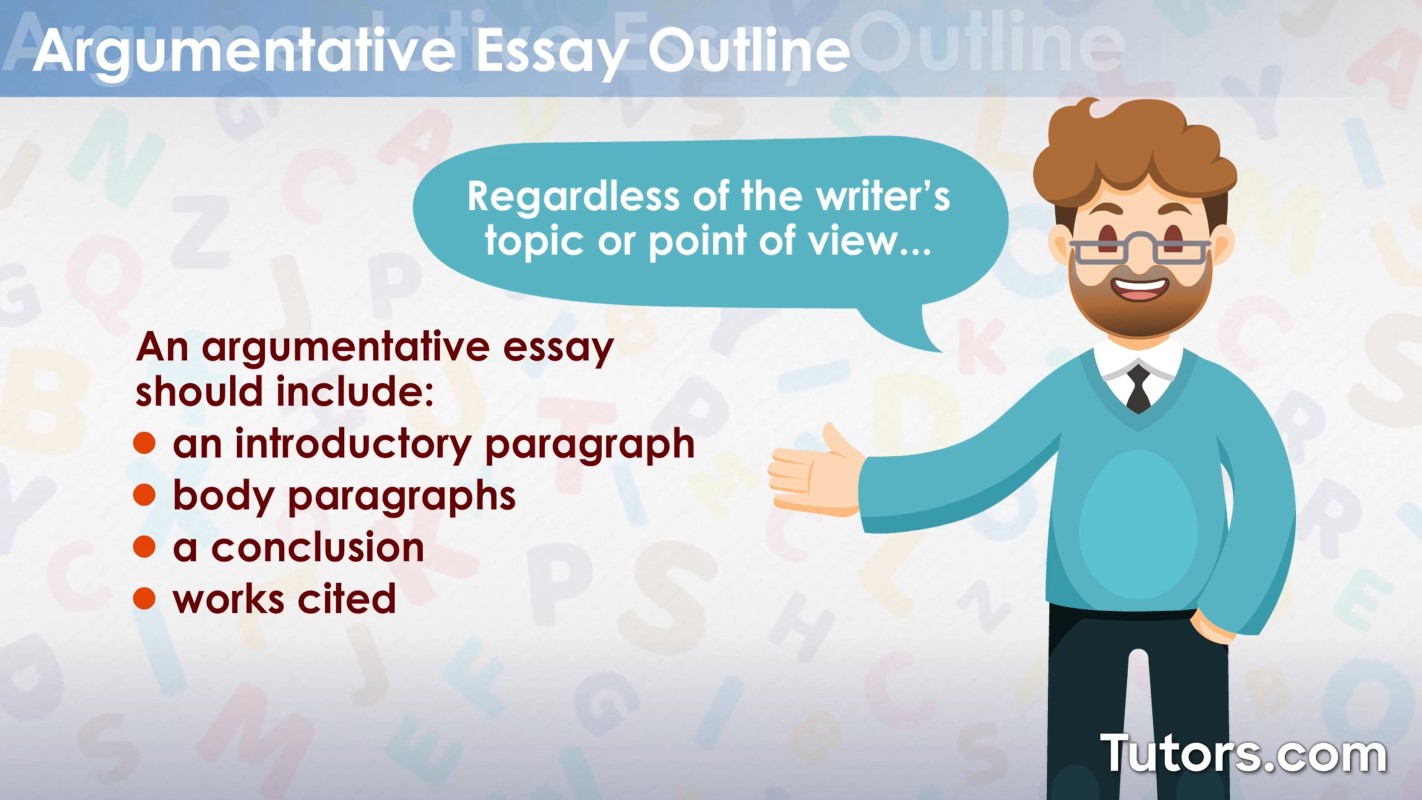
An argumentative essay requires the writer to investigate a specific topic by collecting and evaluating evidence to establish a position on the subject matter.
When preparing to compose a good argumentative essay, utilize the following steps: Step 1: Select a topic. Step 2: Identify a position. Step 3: Locate appropriate resources. Step 4: Identify evidence supporting the position. (NOTE: If there is little evidence in support of the claim, consider re-examining the main argument.)

The following are typically recognized as providing appropriate, credible research material:

Writers should avoid using the following sources:
Step 5: Utilize the research to determine a thesis statement that identifies the topic, position, and support(s).
Step 6: Use the evidence to construct an outline, detailing the main supports and relevant evidence.

After gathering all of the necessary research, the next step in composing an argumentative essay focuses on organizing the information through the use of an outline:

Regardless of the writer’s topic or point of view, an argumentative essay should include an introductory paragraph, body paragraphs, a conclusion, and works cited.
Introduction
Body Paragraphs
Works Cited

The introduction sets the tone for the entire paper and introduces the argument. In general, the first paragraph(s) should attract the reader’s attention, provide relevant context, and conclude with a thesis statement.
To attract the reader's attention, start with an introductory device. There are several attention-grabbing techniques, the most common of which consist of the following:
Provide the reader with relevant context and background information necessary to understand the topic.
Conclude with a thesis statement that identifies the overall purpose of the essay (topic and position). Writers can also include their support directly in the thesis, which outlines the structure of the essay for the reader.
Avoid the following when writing the introduction to argumentative writing:
The thesis statement is the single, specific claim the writer sets out to prove and is typically positioned as the last sentence of the introduction. It is the controlling idea of the entire argument that identifies the topic, position, and reasoning.
When constructing a thesis for an argumentative paper, make sure it contains a side of the argument, not simply a topic. An argumentative thesis identifies the writer’s position on a given topic. If a position cannot be taken, then it is not argumentative thesis:
While not always required, the thesis statement can include the supports the writer will use to prove the main claim. Therefore, a thesis statement can be structured as follows:
TOPIC + POSITION (+ SUPPORTS)
Body paragraphs can be of varying lengths, but they must present a coherent argument unified under a single topic. They are rarely ever longer than one page, double-spaced; usually they are much shorter.
Lengthy paragraphs indicate a lack of structure. Identify the main ideas of a lengthy paragraph to determine if they make more sense as separate topics in separate paragraphs.
Shorter paragraphs usually indicate a lack of substance; there is not enough evidence or analysis to prove the argument. Develop the ideas more or integrate the information into another paragraph.
The structure of an argumentative paragraph should include a topic sentence, evidence, and a transition.
Some essays may benefit from the inclusion of rebuttals to potential counterarguments of the writer’s position.
The conclusion should make readers glad they read the paper. It can suggest broader implications that will not only interest readers but also enrich their understanding in some way. There are three aspects to follow when constructing the conclusion: rephrase the thesis, synthesize information, and call the reader to action.
Avoid the following when constructing the conclusion:
Examples of argumentative essays vary depending upon the type:
Academic essays differ based upon the topic and position. These essays follow a more traditional structure and are typically assigned in high school or college. Examples of academic argumentative essay topics include the following:
Argumentative literary essays are typically more informal and do not follow the same structure as an academic essay. The following are popular examples of argumentative literary essays: